Qchain - A blockchain advertisting solution that's slipping under the radar?
The Problem
The online advertising industry has a problem. Well, several actually. Internet users are becoming increasingly desensitized to spam, pop-ups and some of the more traditional methods of online advertising, and increasing numbers are now resorting to the use of ad-blockers and cookie filtering software to combat this. The solution? Native advertising - or in it's simplest definition, non-disruptive ad content that maintains the look and theme of the website in which it is displayed. It has been proven to have higher levels of engagement than traditional non-native ads, allowing content marketers to build trust with customers, while also proving to be an effective means of getting an advertising message around ad-blocking software. A 2016 Business Insider publication estimates that by 2021, native advertising will comprise 74% of total display ad revenue in the United States. emarketer.com also forecasts that US native digital display ad spend will reach $28.24 billion in 2018, driven by continuously increasing demand for more engaging, less intrusive ads.
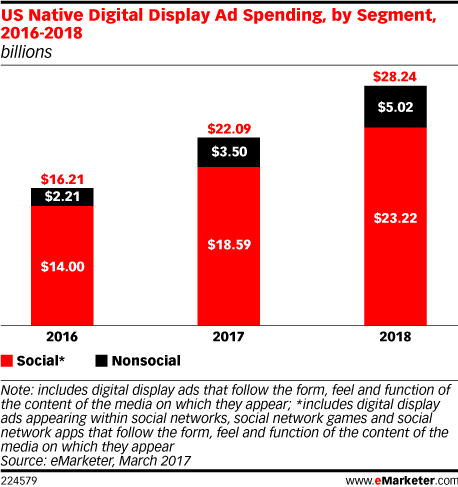
However, at present the process is far from efficient. Advertisers are forced to manually search for publishers across the World Wide Web and individually contact each publisher to shop for native ads. Working with publishers on a case-by-case basis can quickly become both costly and time consuming. This is where Qchain comes in, with their vision of using blockchain technology to create a direct-buy native ads marketplace, streamlining the process of purchasing and selling native advertising and sponsored content. In building an innovative, open and transparent marketplace, Qchain will provide a decentralized and secure way for advertisers and publishers to efficiently and safely interact.
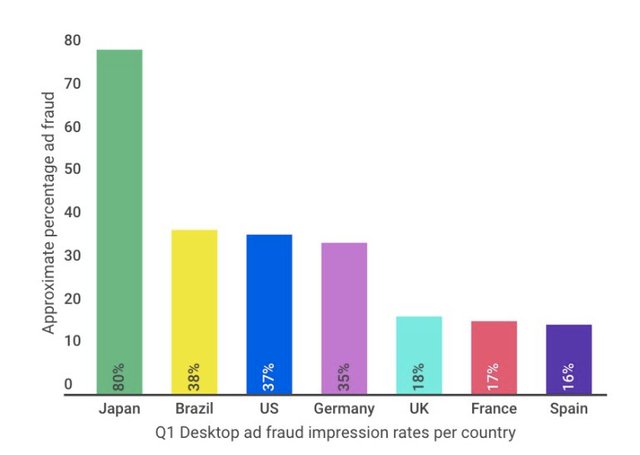
Moreover, the industry also has serious issues relating to transparency and advertising fraud. It is estimated that in 2016 $7.4 billion was wasted on display ads alone, with Forrester estimating that the figure will rise to $10.9 billion by 2021, and other reports predicting an even higher figure. Click farms, bots, domain spoofing and ad misplacement have all been cited as key concerns.
In 2017, Mark Pritchard (of P&G) stated that "we have a media supply chain that is murky at best and fraudulent at worst. We need to clean it up, and invest the time and money we save into better advertising to drive growth."
"We serve ads to consumers through a non-transparent media supply chain with spotty compliance to common standards, unreliable measurement, hidden rebates and new inventions like bot and methbot fraud."
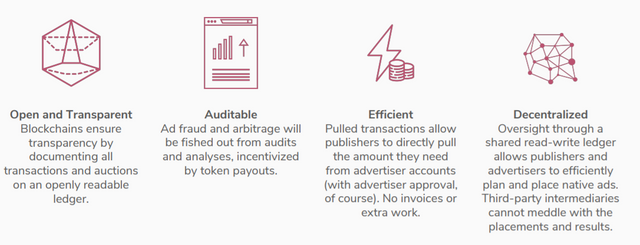
Qchain aim to ensure transparency through documenting all transactions and auctions on an openly readable ledger. Ad fraud will be detected through the use of audits and analyses and fished out, while the decentralized nature of the platform allows advertisers and publishers to efficiently plan and place ads, without the threat of third parties meddling with their placement and results.
The Platform and Token Utilisation
The platform is based on a three-agent model, comprising advertisers, publishers and hosts.
- Advertisers can offer tokens to publishers in exchange for ad space, while being able to specify where and how the ads are delivered and how much they are willing to pay.
- Publishers can also specify which advertisements they are willing to display, in addition to specific details like pricing and for how long.
- Hosts provide the bandwidth and compute the capacity to verify the legitimacy of clicks and impressions. In exchange, they are awarded a percentage of the token payments.
As such, no central authority takes a disproportionately high cut of the transaction.
Unusually, the Qchain application is being built on both the Ethereum and NEM blockchains, in an ambitious attempt to take advantage of each blockchain's unique strengths and capabilities. For example, the utilization of Ethereum allows for the efficient development of decentralized smart contracts, while NEM offers features such as the Proof of Importance algorithm and Eigentrust++ reputation system to encourage transactions. Through dual blockchain interoperability, the team have given users the choice and flexibility to opt for the blockchain that best suits their needs and requirements. Development on each blockchain is being prioritized equally, with dedicated development teams responsible for each of them.
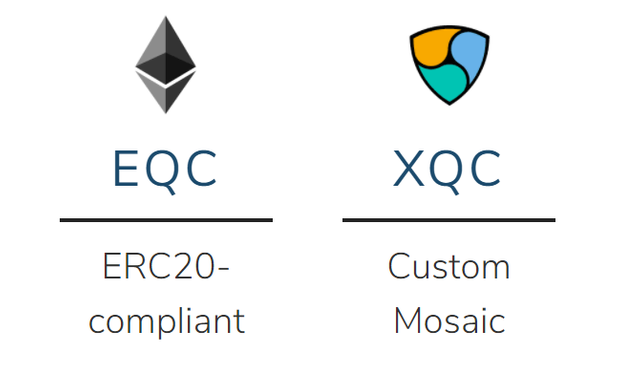
Each blockchain has it's own utility token: EQC for Ethereum and XQC for NEM. Tokens are required for interaction and participation on the marketplace. Following the completion of the Qchain ICO in December 2017, the total supply of each token was as follows:
- EQC - 54,863,905
- XQC - 48,813,421
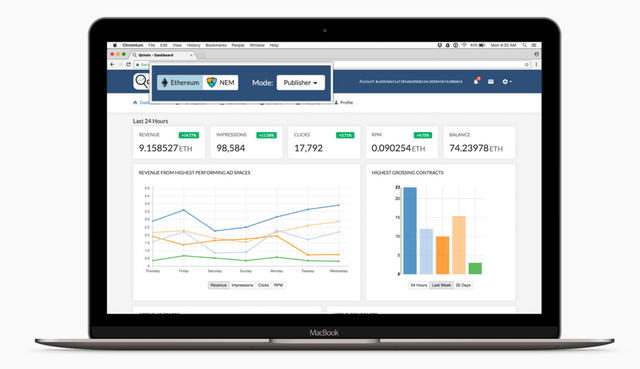
As illustrated in the image above (sourced from the Qchain website), users will be able to easily switch between ETH and NEM modes within one simple user interface. The front end alpha is currently available for use at https://beta-dev.qchain.co
The team have aimed to create a clean, accessible and fast UI that is designed to be familiar to those who have previously used traditional administrative services, therefore simplifying the learning curve. While the front end is kept clean and simple for the user, the real heavy lifting takes place across the decentralized back-end, of which an example is shown in the image below. For more information, refer to the team's Medium page where there are regular informative updates.
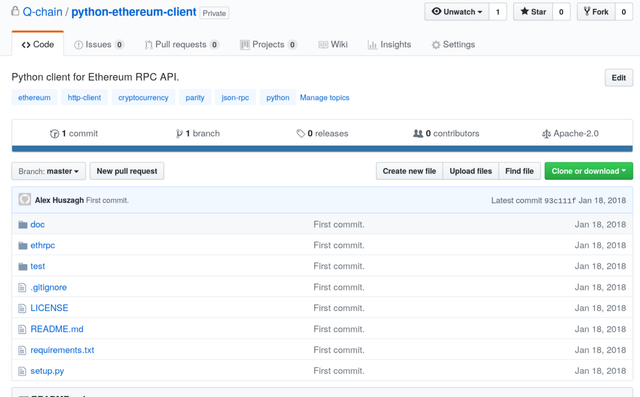
The platform will be compatible with all browsers and devices, in addition to being designed to integrate with existing server infrastructures.
The Team
Qchain have assembled a strong and qualified team from a variety of different backgrounds, all of whom have a shared interest in blockchain technology. The team is fronted by CEO Wally Xie, who cities the benefits of blockchain technology (particularly of decentralization and security) as being something that offers genuine utility to digital marketing an advertising. In an industry where data privacy, security and the over-dominance of central authorities are major concerns, blockchain technology and Qchain present a potential solution.
Being a US based corporation, it is essential that Qchain complies with US Securities laws. In a 2017 interview with Bitcoin Magazine, Xie stated that Qchain "want to be an example of a sustainable, ethical company that grew from a legally compliant ICO".
The project also has some notable advisers, including Lon Wong (President of the NEM Foundation), Mark Pui (Executive Director of PwC Malaysia) and a host of other professionals from a variety of backgrounds.
For more detailed information, please refer to https://qchain.co/team
Availability
EQC is currently available on the exchanges below with more to come, while XQC will potentially be listed on Bankera and NEM exchange, which are due to launch at some point in 2018.
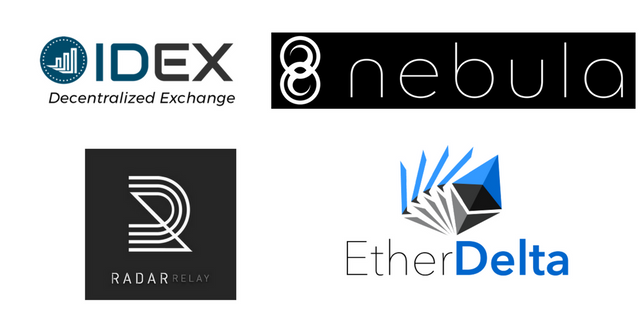
Conclusion and Useful Links
The market cap is currently below $4 million, and the coins are currently not listed on CoinMarketCap, although the team have applied for listing. I feel that this coin is seriously slipping under the radar, considering the strength of the team, advisers, their willingness to communicate and provide regular updates, and the progress that they have already made. Thoughts?
- Website - https://qchain.co/
- Demo - https://beta-dev.qchain.co/
- Medium - https://medium.com/the-qchain-blog
- Telegram - http://www.t.me/qchainplatform
- Reddit - https://www.reddit.com/r/qchain/
- Twitter - https://twitter.com/QchainPlatform

Congratulations @craig2911! You have received a personal award!
Click on the badge to view your Board of Honor.
Do not miss the last announcement from @steemitboard!